Great ideas don’t just occur. In order to come up with some great new idea, you need to have the right knowledge and experience, and the ideal circumstance. However, there are techniques that you can use to boost your creative thinking skills.
In this post, we’ll look into creative thinking techniques that will help accelerate the process. You can start right away with the editable templates provided.
What is Creative Thinking?
Let’s start with the creative thinking definition.
Many people associate being creative with being able to paint, sing or write, but someone who is not good at any of these things could still be a creative thinker.
How? Because creative thinking is the process of coming up with something new; looking at a problem from a new light and finding an innovative solution or a solution that hasn’t been thought of before. Or in other words, thinking outside the box.
Although some people are more creative than others, creative thinking can be developed with practice. It’s a skill that is indispensable to everyone whether you are still learning or working.
Creative Process
Creative ideas don’t just pop in your head. If you need to come up with innovative ideas you need to set the circumstances for it to occur or give your brain the right material to work with. Let’s understand how creative thinking works.
According to the book The Art of Thought by Graham Wallas, there are four stages to creative thinking.
Preparation: This is where you define the problem you want to solve or the need. Then you start gathering as much knowledge about the subject as you can.
Incubation: In this stage, you’ll be processing the information you have gathered. Instead of consciously trying to solve the problem, you’ll let your mind wander on its own, working its way through the subject. This will lead to more creativity. Basically, your unconscious mind will be at work here.
Illumination: This is the “Eureka” moment that really occurs when you are not actively thinking of a creative solution. You could be literally having a shower when all of a sudden you have found the answer you’ve been looking for.
Verification: Now it’s time to see if your idea will really work out or not. In this last stage of the creative thinking process, you need to test your idea. Use your critical thinking skills to fine-tune your idea and ready it to reach the audience.
Creative Thinking Techniques
We have listed below several creative thinking techniques that you can use to come up with creative ideas faster. The templates are instantly editable; you can even collaborate with others from your team on editing them during a brainstorming session.
1. Affinity Diagrams
After a brainstorming session, meeting or research you end up with a load of information that needs to be sorted through and categorized. This is where the affinity diagram tool comes.
The affinity diagram helps you group your data based on themes. This makes it easier to detect patterns and connections among the information you have gathered, thus allowing you to come up with new ideas or solutions.
Don’t know how to use the affinity diagram? We’ve got you covered with this complete guide to affinity diagrams.
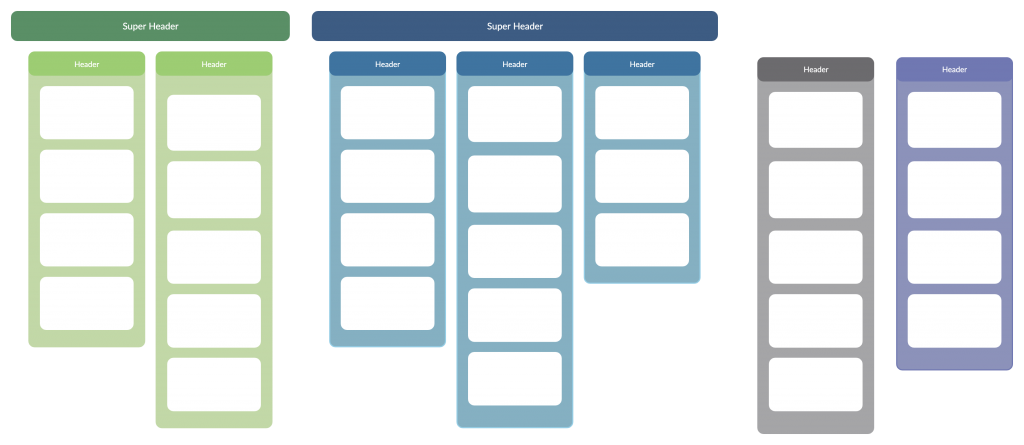
2. Brainstorming
Brainstorming is one of the most popular methods of idea generation. You can go about this individually or with a group of people.
In group brainstorming, you have the ability to collect many creative ideas from people with diverse skills and experience.
There are many brainstorming techniques out there, and some handy visual brainstorming techniques are listed in this post. And refer to this resource to learn about how to carry out a successful brainstorming session step-by-step.
3. Concept Map
The concept map maker is a teaching and learning techniques that help visualize the connections between concepts and ideas. It helps organize thoughts and discover new relationships, ideas or concepts.
Check out our guide to concept maps to learn about how to use it in more detail.

4. Mind Map
The mind map starts with the key concept you are brainstorming around in the center. Related ideas are connected to the center with lines.
It helps you capture your free flow of thoughts and organize them on a canvas in a way that will later allow you to discover new connections that will let you arrive at a possible solution.
Because it connects both text and a visual layout, it allows for a more creative style of thinking.

5. Mood Board
A mood board – like a collage – is a collection of images, fonts, icons colors, etc. that is representative of a particular theme or style. Mood boards are also known as inspiration boards and commonly used in design projects.
Here’s how to use a mood board.

6. SCAMPER Technique
SCAMPER is another successful creative thinking technique that is used to spark creativity during brainstorming. SCAMPER stands for seven thinking approaches,
- Substitute
- Combine
- Adapt
- Modify
- Put to another use
- Eliminate
- Reverse
Learn how to generate new ideas using the SCAMPER method here.
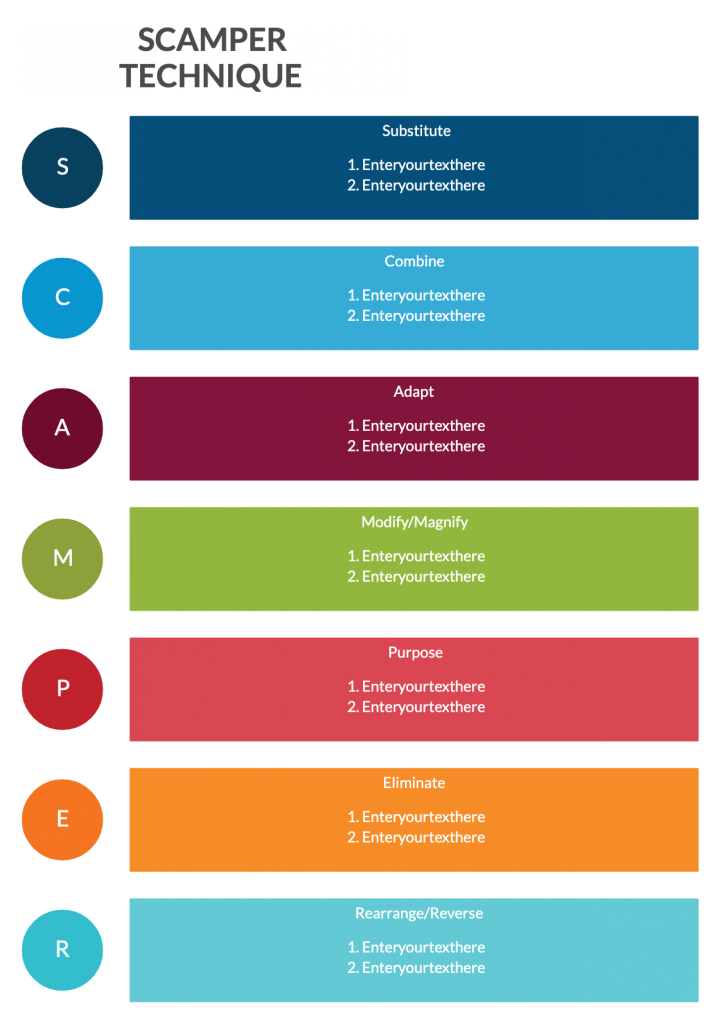
7. Six Thinking Hats
Each hat in the six thinking hats method represents a different perspective. It is used during meetings or brainstorming sessions to allow team members to look at possible solutions from different perspectives or thinking directions.
Each hat represents a different thinking angle, and during the session, each member will get to put it on in turn.
White hat – facts and information
Red hat – feelings, intuitions, emotions, and hunches
Balck hats – judgment, legality, morality
Yellow hat – optimism, benefits
Green hat – new ideas, opportunities
Blue hat – conclusions, action plans, next steps
Refer to this resource on six thinking hats to learn about how to use it in more detail.
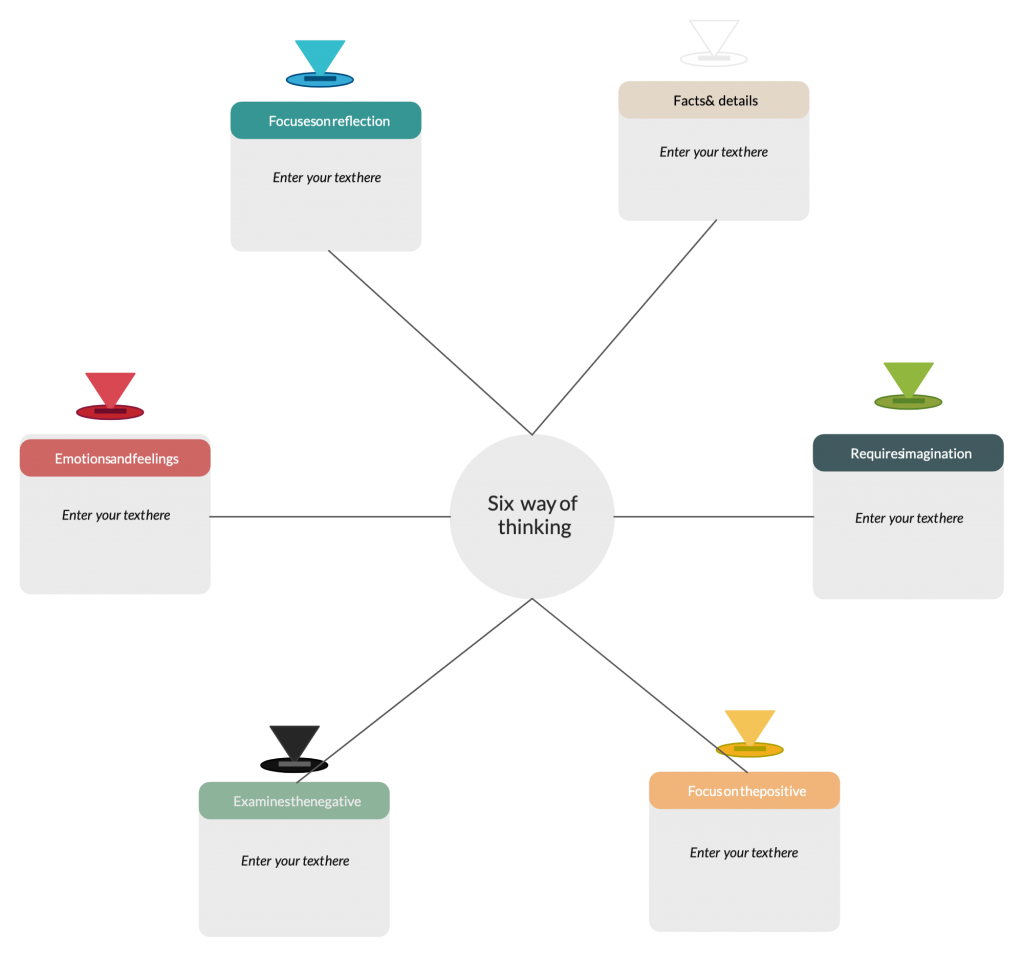
8. Storyboards
Storyboards are a way to visually organize ideas. It’s a common tool used in video planning. Say you are planning a TV advertisement, you can start with a storyboard software to graphically organize the ideas in your head. As you lay them out on a storyboard, you’d be able to quickly mold the idea in your head.
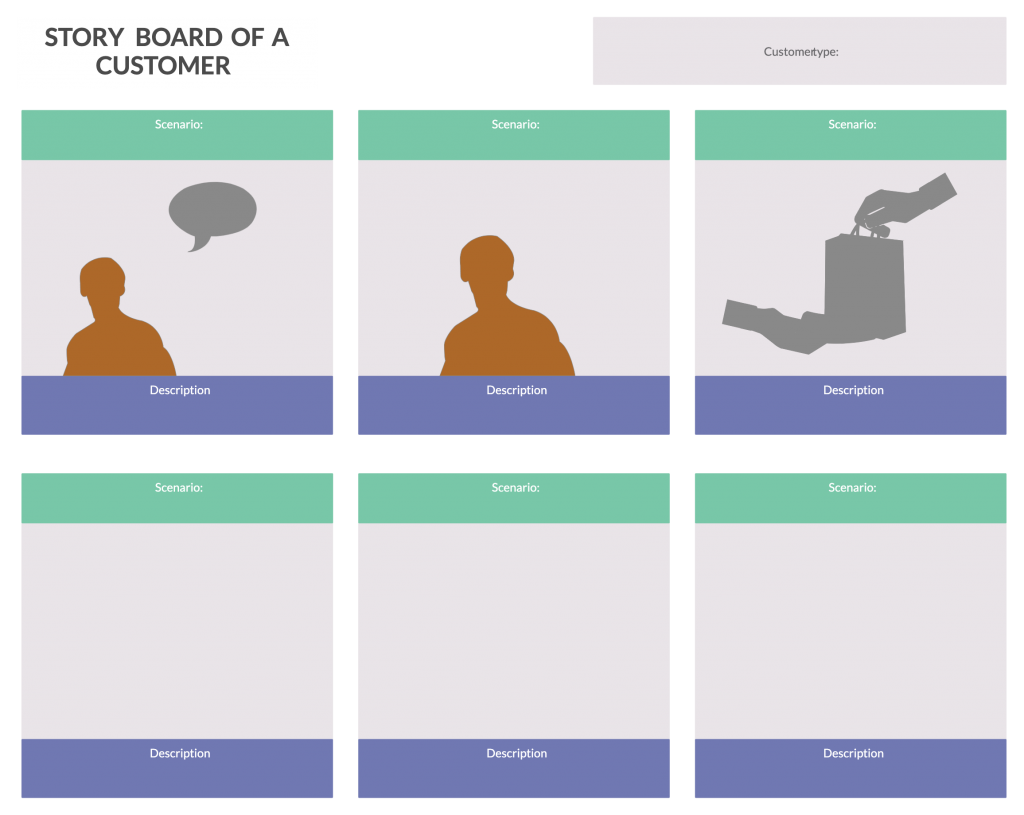
9. SWOT Analysis
SWOT stands for Strengths, Weaknesses, Opportunities, and Threats. In business planning, the SWOT analysis is applied in various situations; in competitor analysis, situation analysis, strategic planning, personal evaluation, etc.
It can be used to identify effective innovative opportunities, mitigate threats using strengths, etc.

What More Creative Thinking Techniques Do You Know?
Here, We’ve covered most visual creative thinking techniques. Go ahead and share with us your most favorite creative thinking technique as well.

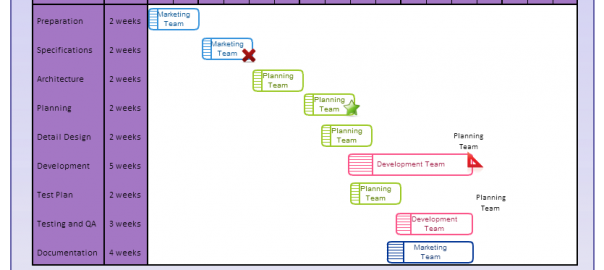

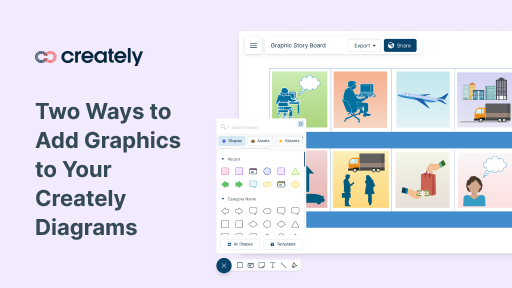
Brilliant Information. Suggest you to describe each above topic in relation to an issue of our day to day life of a common man which may help majority of people to understand despite other barriers of each community